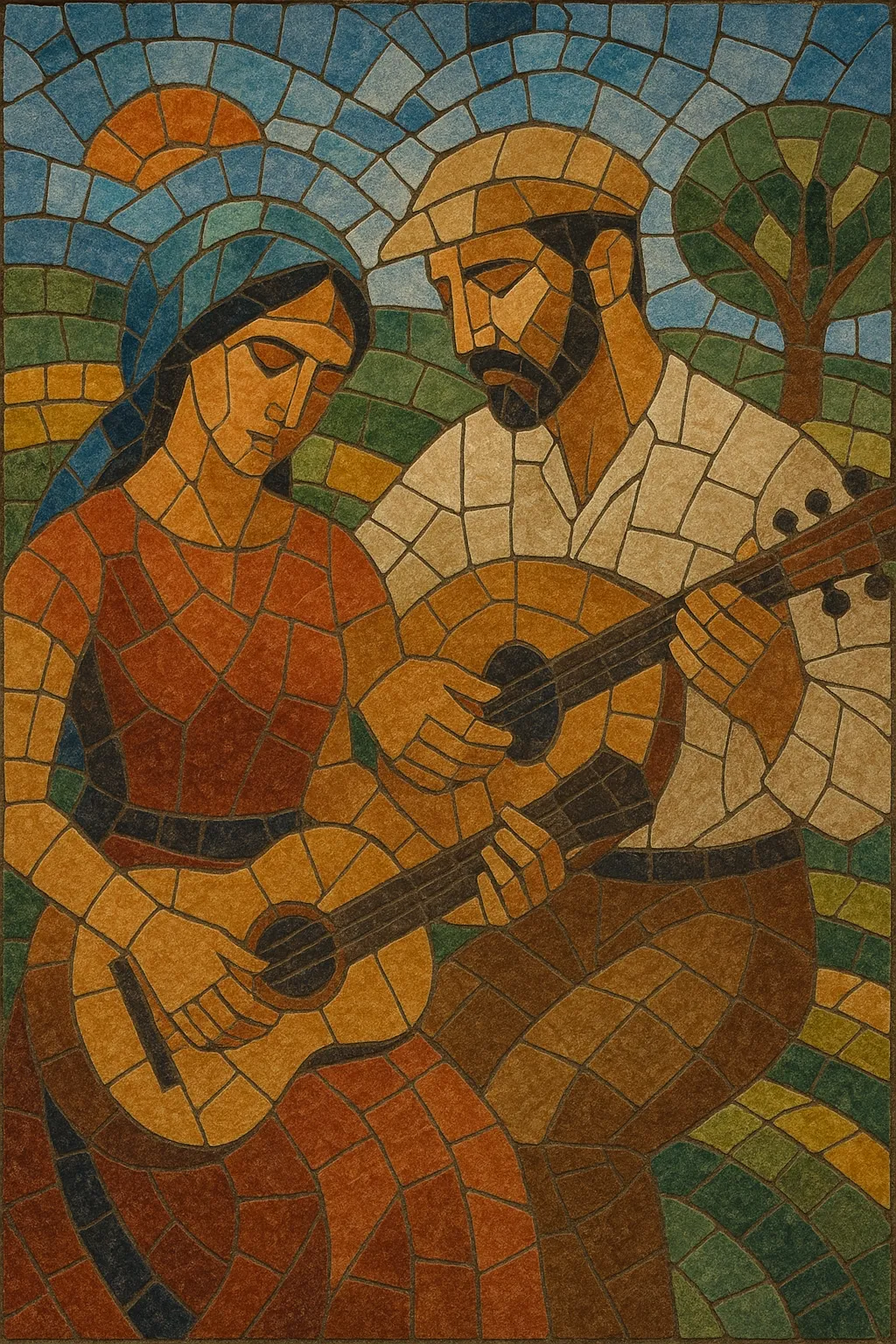Israeli folk music (often called Shirei Eretz Yisrael) is a body of Hebrew-language songs and melodies that crystallized during the Yishuv era and the early decades of the State of Israel. It was created for communal singing, national ceremonies, and folk dancing, and it emphasizes clear melodies, memorable refrains, and strophic song forms.
Stylistically it fuses Ashkenazi and Sephardi Jewish traditions with Levantine/Arabic modal practice, Eastern European pioneer songs, and local Bedouin/Palestinian rhythmic sensibilities. Typical textures include unison or simple two-part choral singing accompanied by guitar or accordion, with later incorporations of oud, darbuka, and other Middle Eastern instruments. Dance rhythms such as the hora and debka, and modal colors like Ahava Rabbah/Freygish (Phrygian dominant) are common. Lyrically, songs reference the land, seasons, labor, landscapes, and shared nation-building ideals.
Israeli folk music emerged among Hebrew-speaking communities in Ottoman and then British Mandate Palestine. Pioneers adapted Eastern European folk-song models and Jewish liturgical modes to Hebrew texts, while also absorbing local Levantine/Arabic rhythms and scales. Early songs were designed for collective singing, agricultural work, and new folk dances such as the hora and debka.
With statehood in 1948, the "Songs of the Land of Israel" formed a unifying cultural canon. Composers like Mordechai Zeira and Moshe Wilensky wrote strophic, easily singable songs that were disseminated via radio, community songbooks, kibbutz culture, and army ensembles (notably the Nahal Band). Performers such as Shoshana Damari and Yaffa Yarkoni helped popularize the repertoire nationwide. The sound blended accordion- and guitar-led arrangements with choral refrains and gradually integrated Yemenite and broader Sephardi/Mizrahi elements.
As Israel’s population diversified, Israeli folk music intersected with emerging styles (e.g., Mizrahi music) and popular singer-songwriter traditions. Artists like Naomi Shemer and Arik Einstein brought folk idioms into mainstream pop and rock while preserving the communal, lyrical essence. Folk dance festivals and song contests continued to refresh the repertoire, and ethnomusicological interest encouraged the inclusion of oud, qanun, and Middle Eastern percussion.
In the 21st century, Israeli folk songs remain staples of school curricula, communal singing (shira b’tzibur), and national ceremonies. New arrangements and world-fusion projects revisit classic melodies with modern instrumentation, while choirs and folk-dance circles keep the participatory ethos alive.
Write strophic, singable melodies with clear, memorable refrains that invite communal singing. Favor Hebrew texts with imagery of land, seasons, places, and collective experiences.
Use modal colors associated with Jewish and Levantine practice: Ahava Rabbah/Freygish (Phrygian dominant), Hijaz-like gestures (augmented seconds), and natural minor/major when appropriate. Keep melodies mostly stepwise with modest range, adding ornaments or turns at phrase cadences.
Support folk dances (hora/debka) with steady, driving meters. Common feels include 2/4 or 4/4 hora with offbeat accents and clapping; for debka, use a grounded 2/4 or a lilting 6/8. Keep phrases in symmetrical 8- or 16-bar units for easy choreography.
Use simple, diatonic progressions (I–IV–V, i–VII–VI–V), with occasional modal inflections (e.g., bII leading to V in Freygish). Structure songs as verse–refrain or verse–refrain–bridge, ensuring the chorus is easy for a group to learn and repeat.
Blend European folk instrumentation (accordion, acoustic guitar, violin, flute/recorder, mandolin) with Middle Eastern timbres (oud, qanun, ney, darbuka/riq). Arrange for unison voices or straightforward two-part harmony; add handclaps and light percussion to support the dance pulse.
Use clear Hebrew diction and natural speech accents. Themes often include working the land, nature, journeys, and shared memory. Keep lines concise and rhythmic so they sit comfortably in the dance groove.
Record with a live, communal feel: group vocals around a single mic, minimal processing, and dynamic swells in the chorus. If modernizing, introduce subtle world-fusion elements while preserving the singalong core and danceable rhythm.


